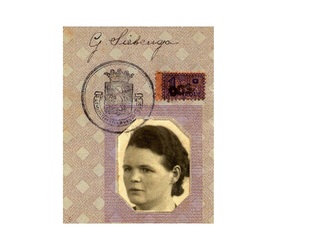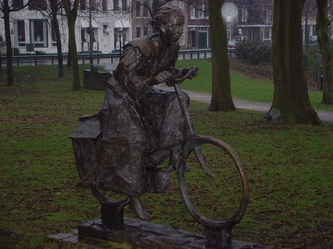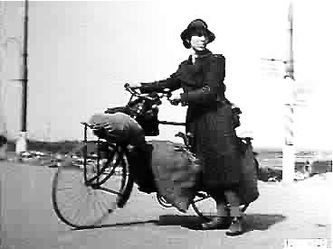Picture Gallery from left to right, My grandmother's Aussweis (identity card), the statue of the courier and a girl on her bike delivering food during the war
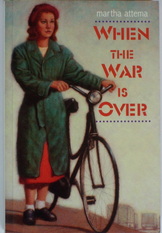
'When the War is Over' historical fiction for readers 12 and up.
* selected for inclusion on the 2004 New York Public Library's Books for the
Teen Age List
* nominated for the Manitoba Young Reader's Choice Award, 2004
In occupied Holland during WW II, sixteen-year-old Janke Visser watches her father's and brother's involvement with the resistance movement in their small town and longs to help fight the nazi invaders. But there is tension in the family as her nervous mother fears that their actions will doom them all. Nevertheless, when the opportunity to become a courier for the resistance presents itself, Janke welcomes it.
As living conditions deteriorate and her missions become ever more perilous, it is her hatred of the Nazis that fuels the courage and determination Janke needs to go on. And then she meets Helmut, a young German soldier who doesn't fit the stereotype she has learned to hate so fiercely. When Janke is captured while on a mission, her fate seems sealed. Unless Helmut is willing to betray his own country...
During my research of WW II, I found two biographies of women who had been working as couriers during the war. Young girls and women all ages often worked for the resistance. They carried secret documents, took Jewish people to safe hiding places, distributed illegal newspapers and often accompanied Allied pilots, who had been shot down by the Germans and saved by the resistance, to safe addresses. The couriers risked their own lives in order to save others. Some of these girls were arrested, interrogated, sent to concentration camps and executed by the Nazis. The heroic deeds of these women and girls were never mentioned in the history books when I studied WW II.
When I read the biographies of the two couriers, I became overwhelmed by the courage of these often very young girls. Their fight against the nazis called for heroic actions in which they often took enormous risks and put their lives on the line for strangers.
During one of our visits to Friesland we visited the bronze statue of the courier. The girl on the bike represents all women and girls, who risked their lives to save others.
* selected for inclusion on the 2004 New York Public Library's Books for the
Teen Age List
* nominated for the Manitoba Young Reader's Choice Award, 2004
In occupied Holland during WW II, sixteen-year-old Janke Visser watches her father's and brother's involvement with the resistance movement in their small town and longs to help fight the nazi invaders. But there is tension in the family as her nervous mother fears that their actions will doom them all. Nevertheless, when the opportunity to become a courier for the resistance presents itself, Janke welcomes it.
As living conditions deteriorate and her missions become ever more perilous, it is her hatred of the Nazis that fuels the courage and determination Janke needs to go on. And then she meets Helmut, a young German soldier who doesn't fit the stereotype she has learned to hate so fiercely. When Janke is captured while on a mission, her fate seems sealed. Unless Helmut is willing to betray his own country...
During my research of WW II, I found two biographies of women who had been working as couriers during the war. Young girls and women all ages often worked for the resistance. They carried secret documents, took Jewish people to safe hiding places, distributed illegal newspapers and often accompanied Allied pilots, who had been shot down by the Germans and saved by the resistance, to safe addresses. The couriers risked their own lives in order to save others. Some of these girls were arrested, interrogated, sent to concentration camps and executed by the Nazis. The heroic deeds of these women and girls were never mentioned in the history books when I studied WW II.
When I read the biographies of the two couriers, I became overwhelmed by the courage of these often very young girls. Their fight against the nazis called for heroic actions in which they often took enormous risks and put their lives on the line for strangers.
During one of our visits to Friesland we visited the bronze statue of the courier. The girl on the bike represents all women and girls, who risked their lives to save others.
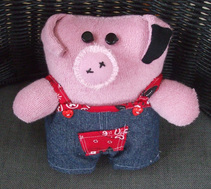
"Hi, me again, Patch. Wow! Did you read that story! I could never be so brave!"
